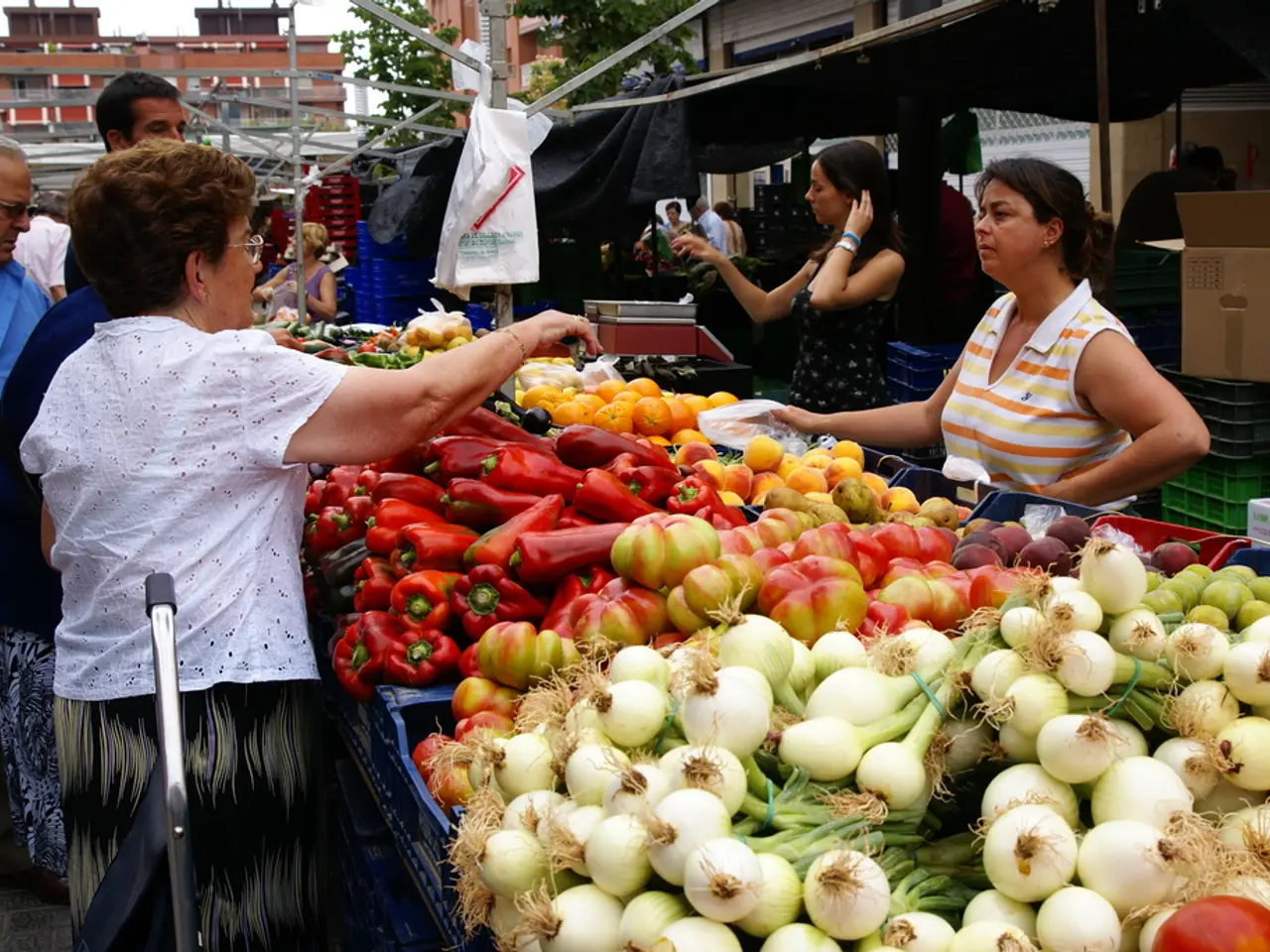Clear Plastic Film in Greenhouses: Perks Over Glass
Greenhouse plastic films have become a popular choice for growers seeking to extend their growing season and maintain a steady supply of produce all year round. One such brand, ECO Gardener, offers a range of high-quality greenhouse plastic films that provide numerous advantages over traditional greenhouse sheets.
ECO Gardener greenhouse clear plastic film boasts a high light transmission rate of over 90%, significantly boosting photosynthesis and supporting robust crop growth. This efficient light diffusion and UV protection, thanks to UV treatment, make the film an ideal choice for greenhouse cultivation.
In terms of thermal insulation, the film improves temperature control, particularly retaining heat during cold nights to stabilize the greenhouse environment. Additionally, the film's UV protection extends crop life and prolongs the durability of the film itself.
To combat condensation buildup, ECO Gardener greenhouse films feature anti-fog and anti-drip coatings. These coatings prevent water accumulation and associated light loss, ensuring optimal growing conditions. Furthermore, the film's tear-resistant structure withstands wind, mechanical stress, and extreme weather conditions, allowing for multi-year use without frequent replacement.
One of the key operational benefits of ECO Gardener greenhouse films is their ability to aid in year-round cultivation by maintaining stable environmental conditions irrespective of seasonal extremes. This enhances crop variety and yield continuity, making it a suitable choice for diverse agricultural setups from commercial to home gardening.
Compared to traditional rigid glass sheets, ECO Gardener films are often more cost-effective, flexible, and easier to install and maintain. They are lighter and easier to handle and fit, making installation a breeze.
ECO Gardener greenhouse plastic films are made from different types of plastic materials, including polyethylene, copolymer, polyvinyl, and polycarbonate. Polyethylene plastic films are available in commercial grade and utility grade, with a lifespan of 2 years if properly cared for. Polyvinyl plastic is a more expensive material due to its thickness and strength, with a lifespan of several years. Copolymer plastic is more resilient than standard polyethylene plastic but becomes brittle over time and with exposure to harsh weather conditions.
Polycarbonate plastic film is the most durable, featuring a twin wall of polyethylene plastic, and can last for at least a decade with proper care. Greenhouse plastic films are customizable in shapes and sizes, and they do not require steel frames, allowing for the use of lighter and easier-to-maintain wooden frames.
Moreover, plastic greenhouse films eliminate the need for artificial lighting and moving plants to different parts of the greenhouse. They offer efficient light diffusion and UV protection, more so than standard glass sheets, and they are flexible, do not require frequent replacements, and are shatterproof.
In conclusion, ECO Gardener greenhouse clear plastic film offers better light management, enhanced climate control, durability against weather extremes, and operational benefits, making it a superior choice for growers seeking to maintain a controlled and productive growing environment compared to traditional greenhouse sheets, which might offer less flexibility and higher cost.
[1] ECO Gardener Greenhouse Clear Plastic Film [2] The Advantages of Greenhouse Plastic Films [3] Greenhouse Plastic Film vs. Glass: Which is Better? [4] The Pros and Cons of Greenhouse Plastic Film
[1] ECO Gardener's greenhouse films, including options in fashion-and-beauty like polyethylene, copolymer, polyvinyl, and technology- enhancing polycarbonate, cater to diverse lifestyle needs, offering a range of choices for growers.
[2] The home-and-garden advantages of these films are numerous, such as their high light transmission rates, thermal insulation, anti-fog and anti-drip coatings, and the flexibility they provide in terms of installation and customization.




